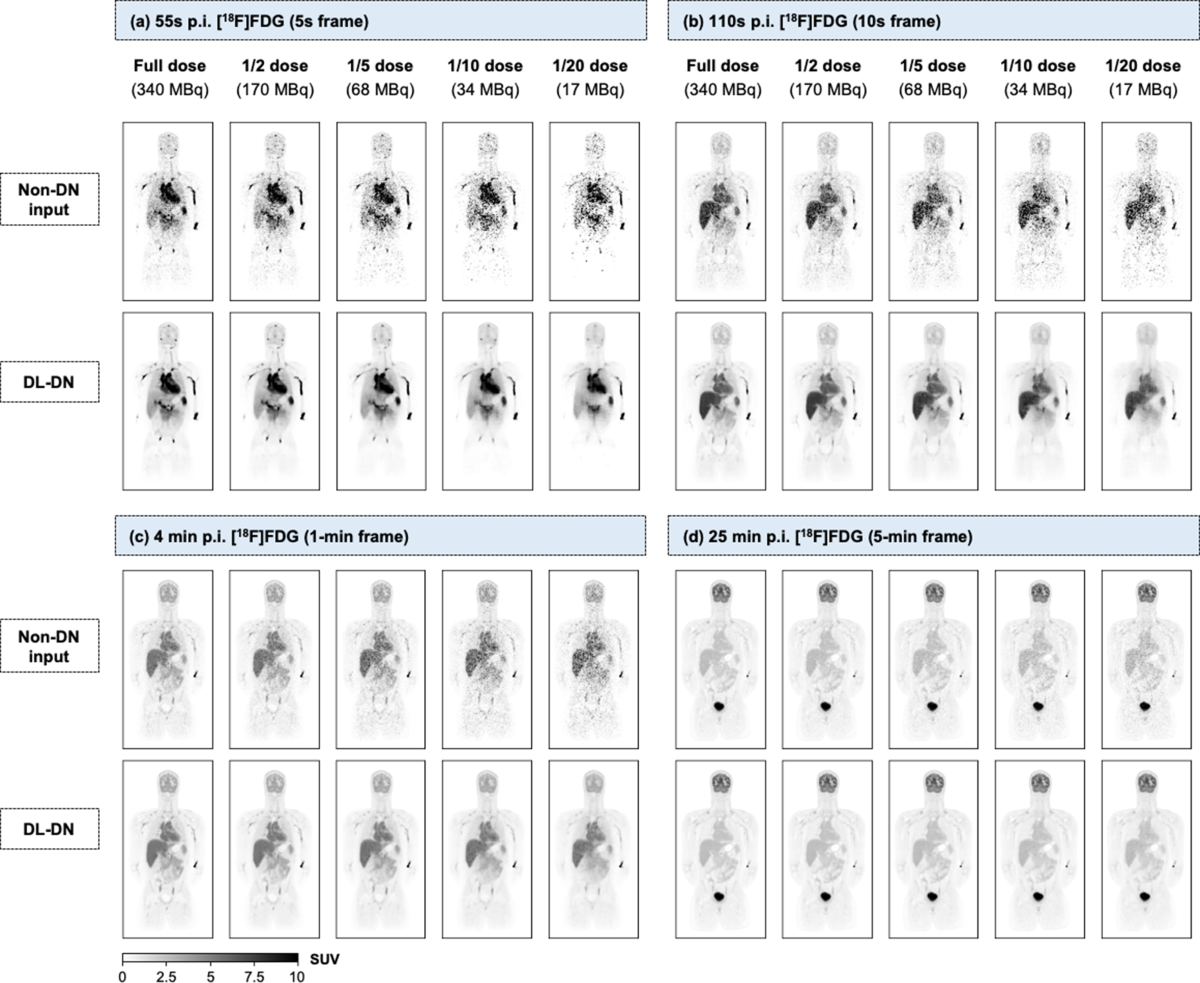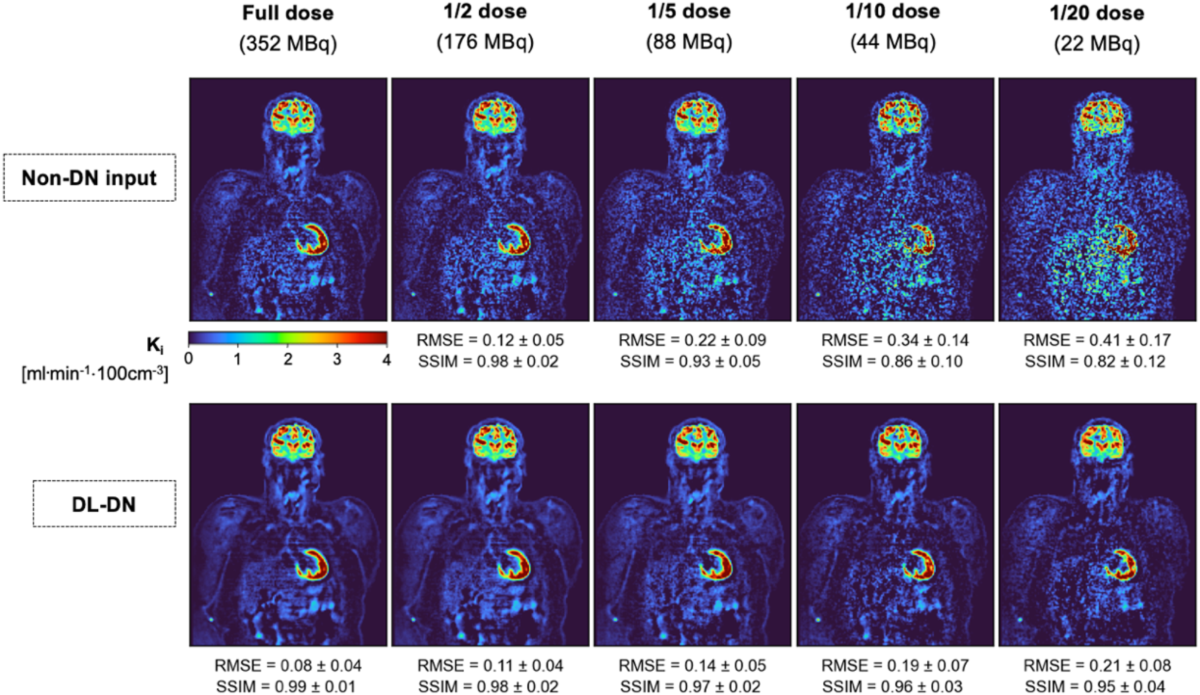Article Review: Impact of deep learning denoising on kinetic modelling for low dose dynamic PET application to single and dual tracer imaging protocols
 Aldo Yang
Aldo Yang2 min read
Objectives
- Developed a deep learning (DL) framework for denoising dynamic Positron Emission Tomography (PET) images, trained on static [18F]FDG PET images.
- Demonstrated that applying deep learning denoising (DL-DN) trained on static [18F]FDG PET images to dynamic [18F]FDG and [18F]fluoroglutamine ([18F]FGln) PET can permit significantly reduced doses, preserving accurate FDG Ki and FGln VT measurements, and enhancing parametric image quality.
- Investigated the potential of DL-DN for low-dose dual-tracer imaging in a single-imaging session with [18F]FGln and [18F]FDG in breast cancer patient.
Methodology
- A 2D U-Net based convolutional neural network (CNN) with attention gates was implemented.
- The network processed three consecutive image slices as input channels to generate predictions for the middle slice.
- Batch normalization and parametric ReLU activation function were used.
- Skip connections and self-attention gating modules were integrated into the U-Net architecture.
- A residual connection between the input and output was added.
- Network training used 2D transverse, coronal, and sagittal slices normalized by their respective means.
- A pixel-wise loss function using the mean squared error and the Adam optimizer were implemented.

Results
- DL-DN consistently improved image quality across all dynamic frames, systematically enhancing time-activity curve (TAC) consistency and reducing tissue-dependent bias and variability in Ki and VT down to 40 MBq doses.

- In a dual-tracer study, bias trends aligned with single-tracer results but showed reduced accuracy for [¹⁸F]FGln in breast lesions at very low doses (4 MBq).
- For [18F]FDG, DL-DN maintained accurate Ki quantification across all dose levels, even at an order-of-magnitude dose reduction (40 MBq).
- For [18F]FGln, DL-DN was less effective at fully compensating for the pronounced noise at very low doses (<8 MBq).
Discussions
- The study lacks a comparison with other denoising methods, such as the kernel method. This comparison would strengthen the claim of DL-DN's superiority.
- The DL-DN network does not account for the temporal variations in tracer uptake inherent in dynamic PET. This limitation may affect the denoising performance.
- The study used training and testing subject data from the high-sensitivity LAFOV PennPET Explorer. The generalizability of the results to standard AFOV PET scanners needs further investigation.
- Further investigation into the sources of K1 variability is needed. Future work should involve detailed sensitivity analyses.

0
Subscribe to my newsletter
Read articles from Aldo Yang directly inside your inbox. Subscribe to the newsletter, and don't miss out.
Written by
